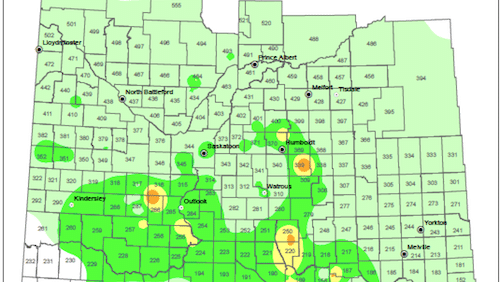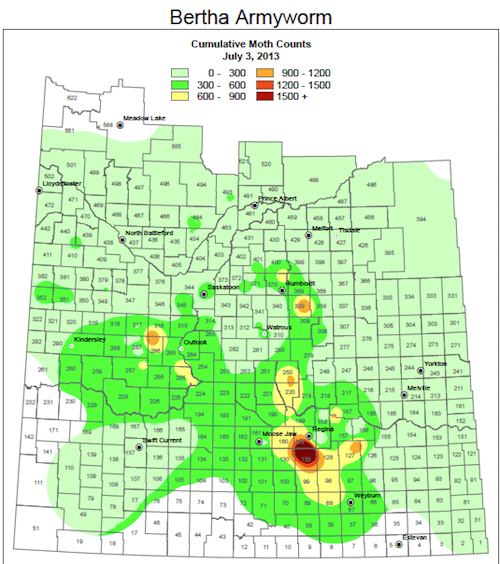Early lygus. Parts of Alberta have reported high lygus counts at early flower — in some cases up to 50 per 10 sweeps. There is no threshold for lygus at this early stage because canola will often recover fully, and in fact, some lygus feeding at this stage can actually trigger a stress response in the plant that forces more flowering and can increase in yield. However, if lygus feeding significantly delays pod formation to the point where maturity becomes in issue, spraying may be warranted at this early stage. Lygus feeding is a bigger issue at later flowering and through podding stages when the plant cannot stage a recovery from feeding losses.
CSPW range expanding. Growers on the fringe areas for cabbage seedpod weevil are encouraged to scout, as reports of higher CSPW numbers are coming in for Moose Jaw, Swift Current, Kindersley and Outlook, areas where CSPW have been found in the past but rarely at threshold levels. The threshold is 2 per sweep. Spray timing is best at around 20% flower, and after 30% flower the opportunity to spray adults before they lay their eggs is over and spray will not be effective.
Click here for more on cabbage seedpod weevil scouting and management.
Podcast: CCC agronomy specialist Autumn Holmes-Saltzman speaks on CSPW.
Click here for bee considerations when spraying insects during flowering.
Bertha hot spots. Adult trap counts suggest low to medium risk in most areas this year, with a couple higher risk hot spots in Saskatchewan — south of Regina being the largest. (See the map above.) Any need to spray is at least two weeks away. Larvae do the damage, and spraying should only occur if larvae feeding reaches threshold levels. Note that even in areas deemed low risk by adult counts, isolated areas of heavy larvae feeding can occur. Don’t completely let your guard down even if adult numbers are low.
Manitoba map.
Alberta map.
Diamondback moth. Adult trapping has wound down, and the focus now is on larvae — which are hatching. Thresholds are 20 to 30 larvae per square foot at the advanced pod stage. This works out to approximately two to three larvae/plant if plant population is close to 10 per square foot.

